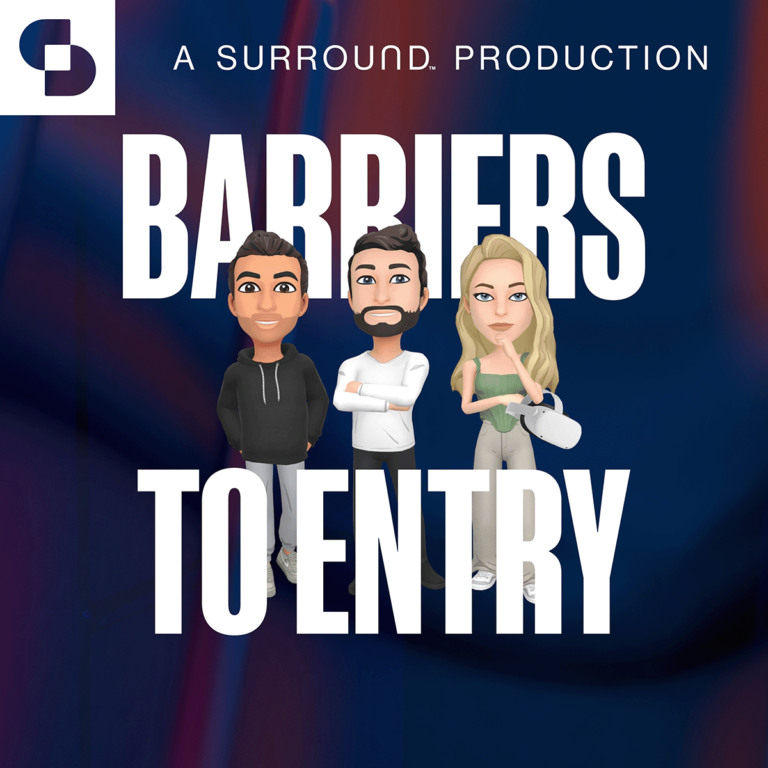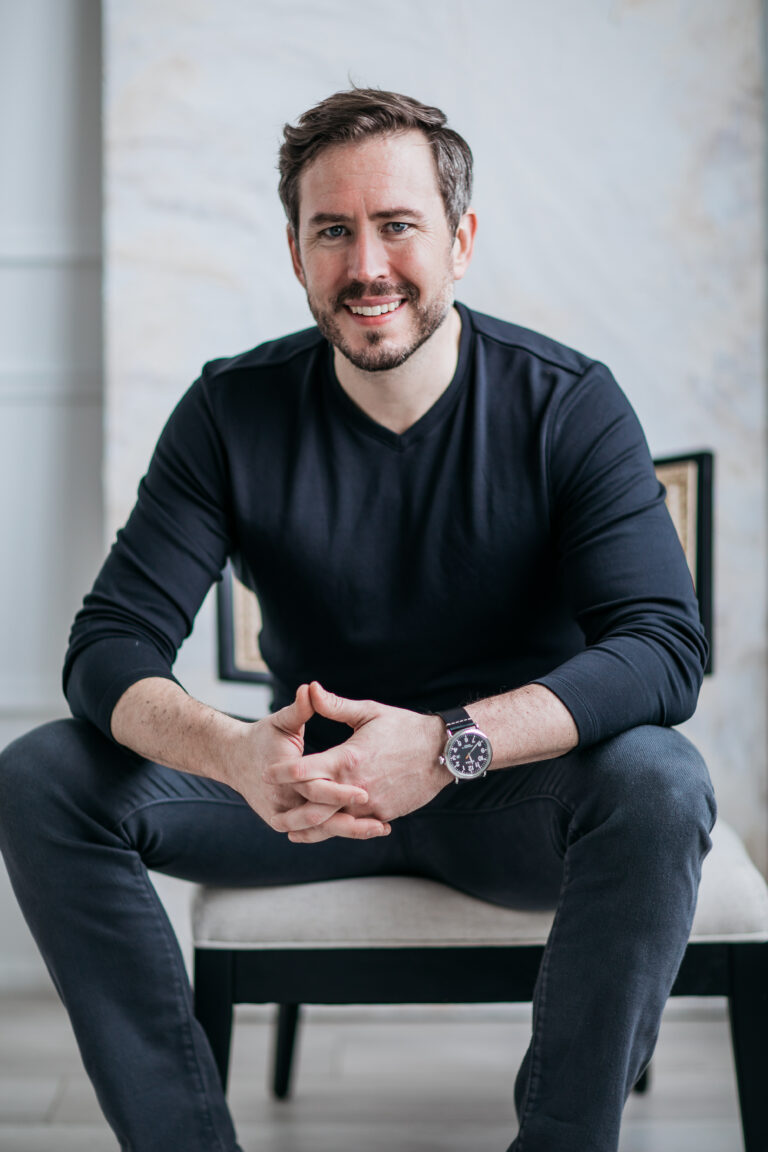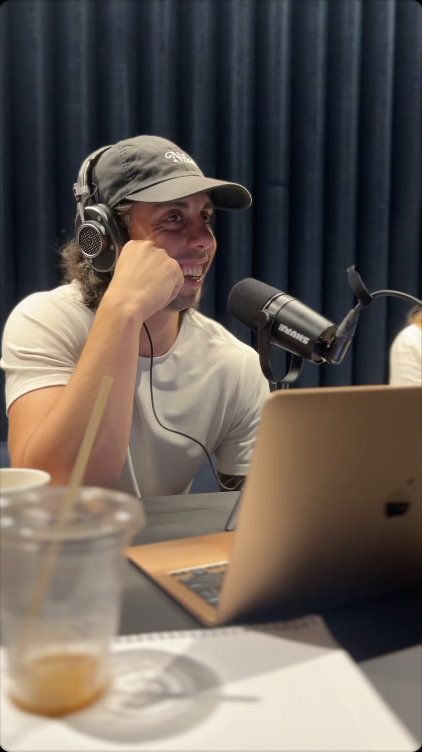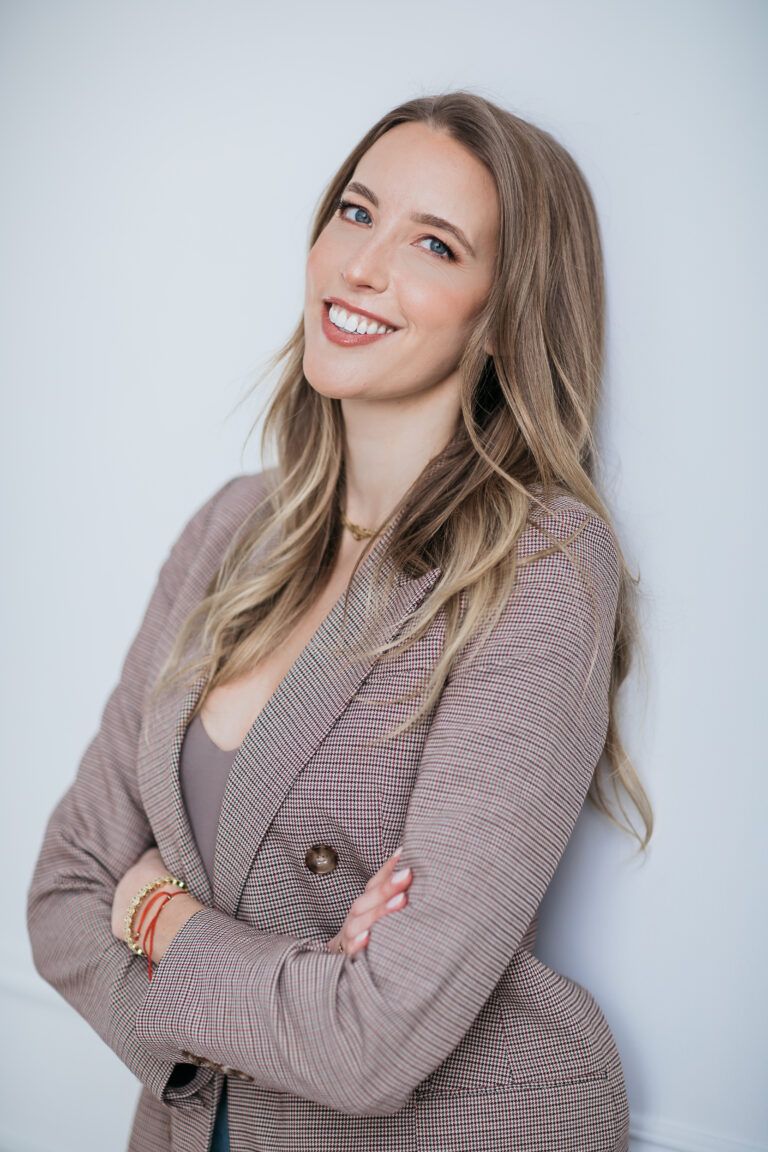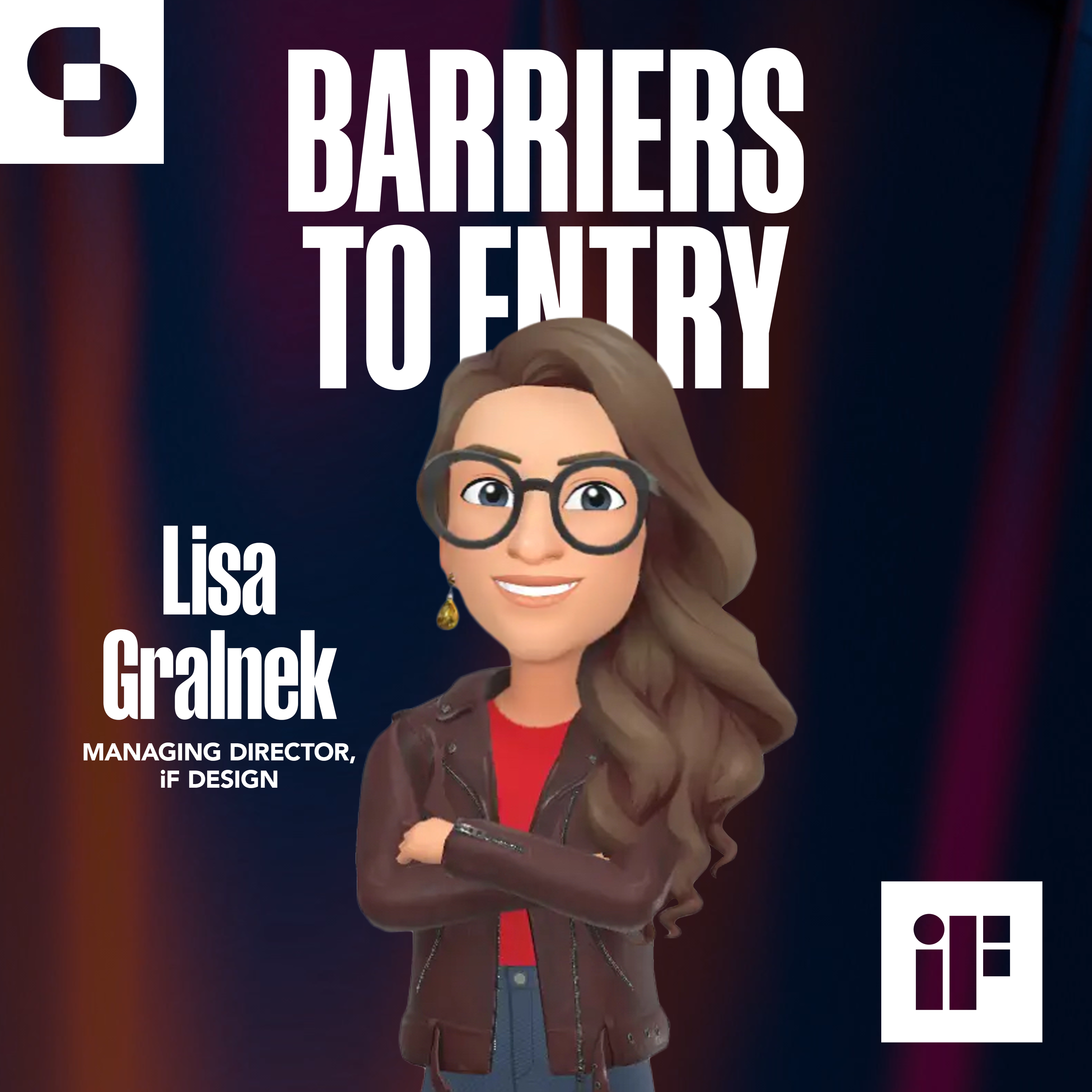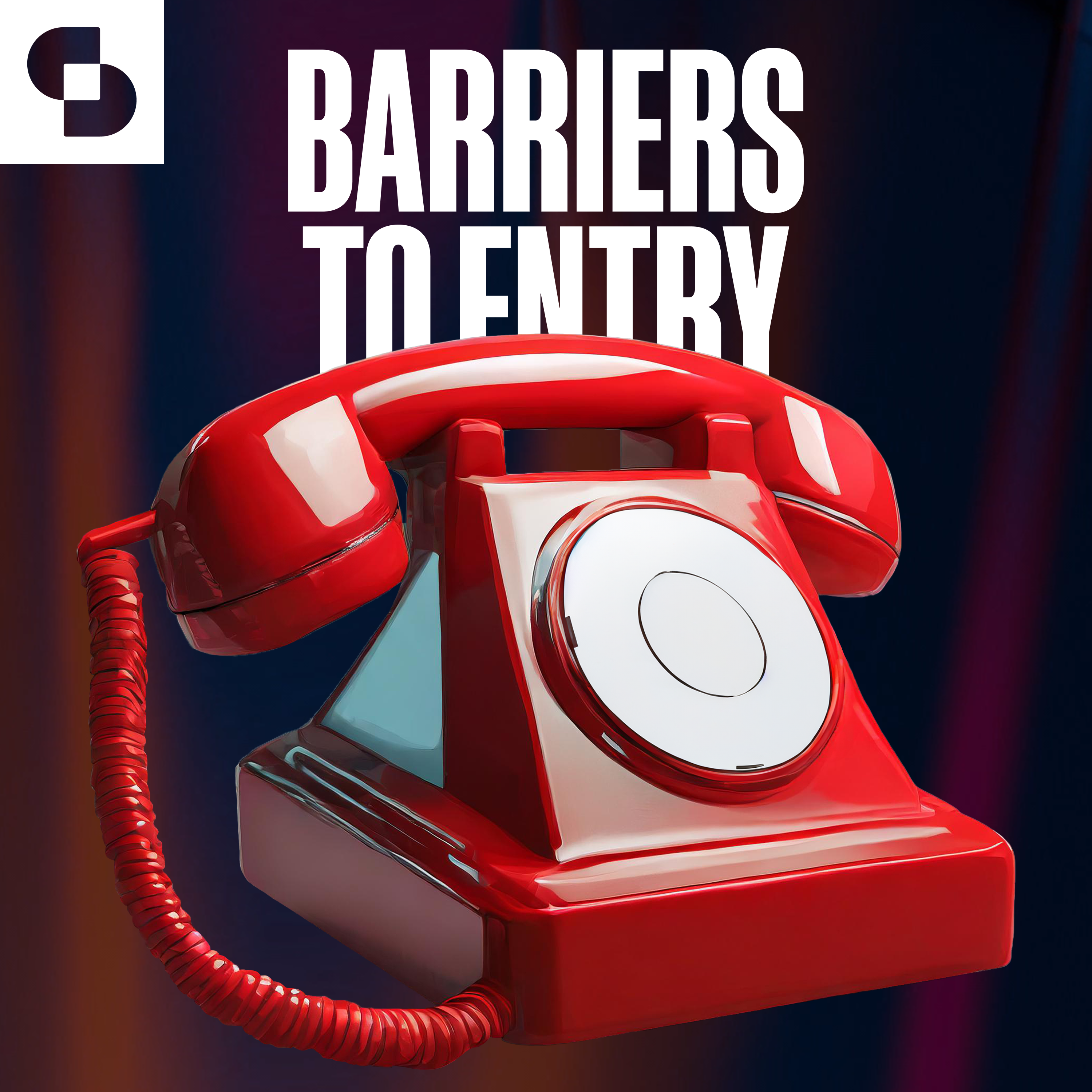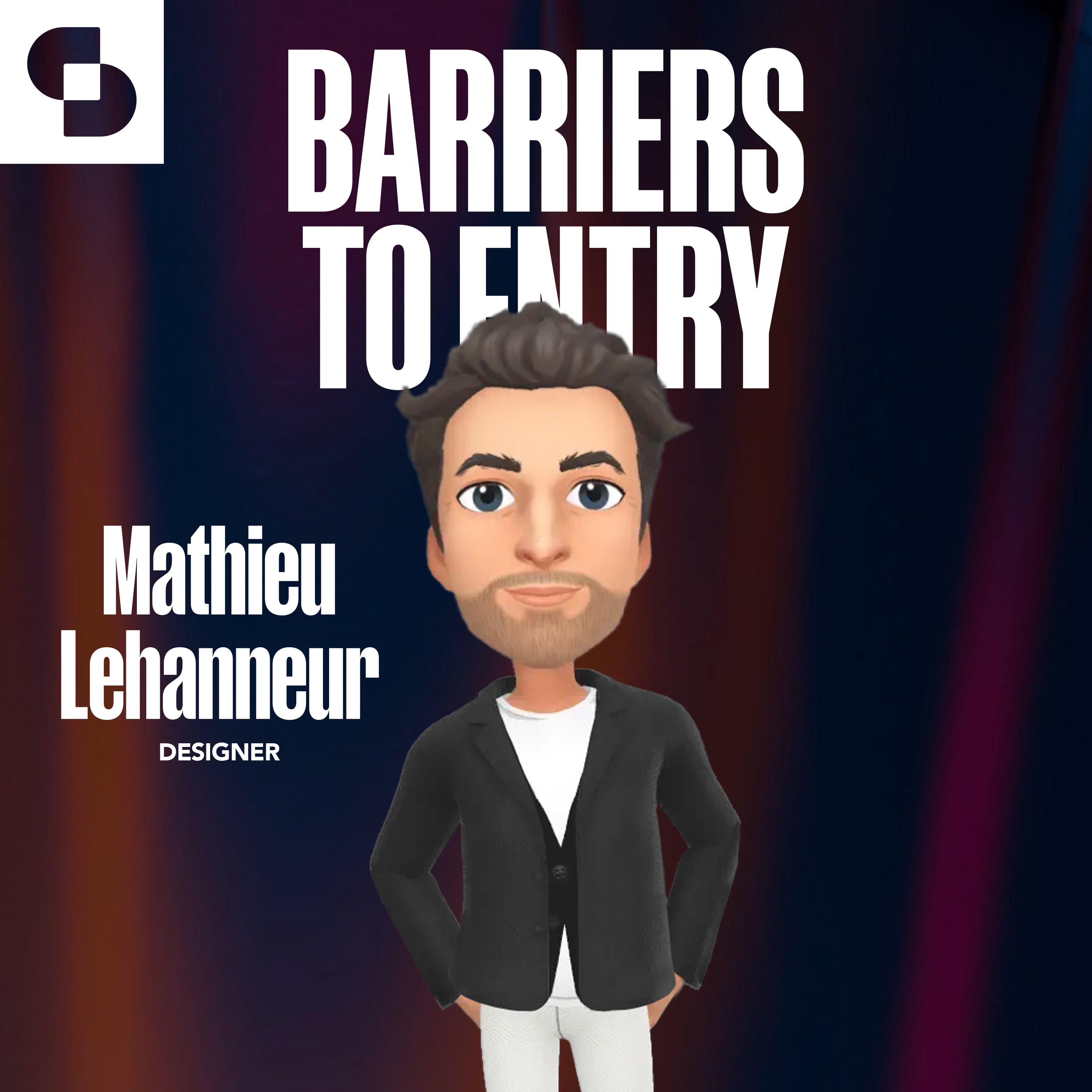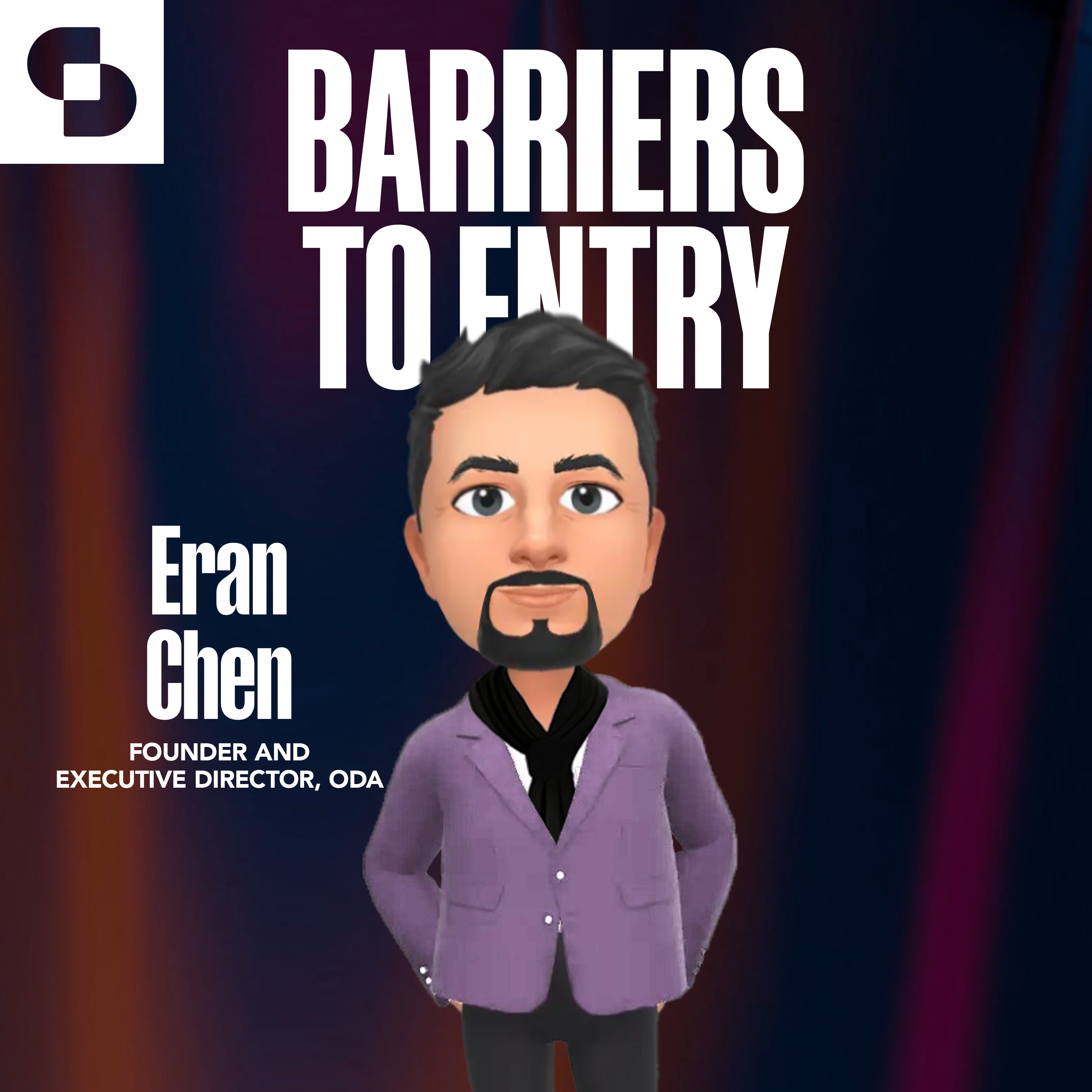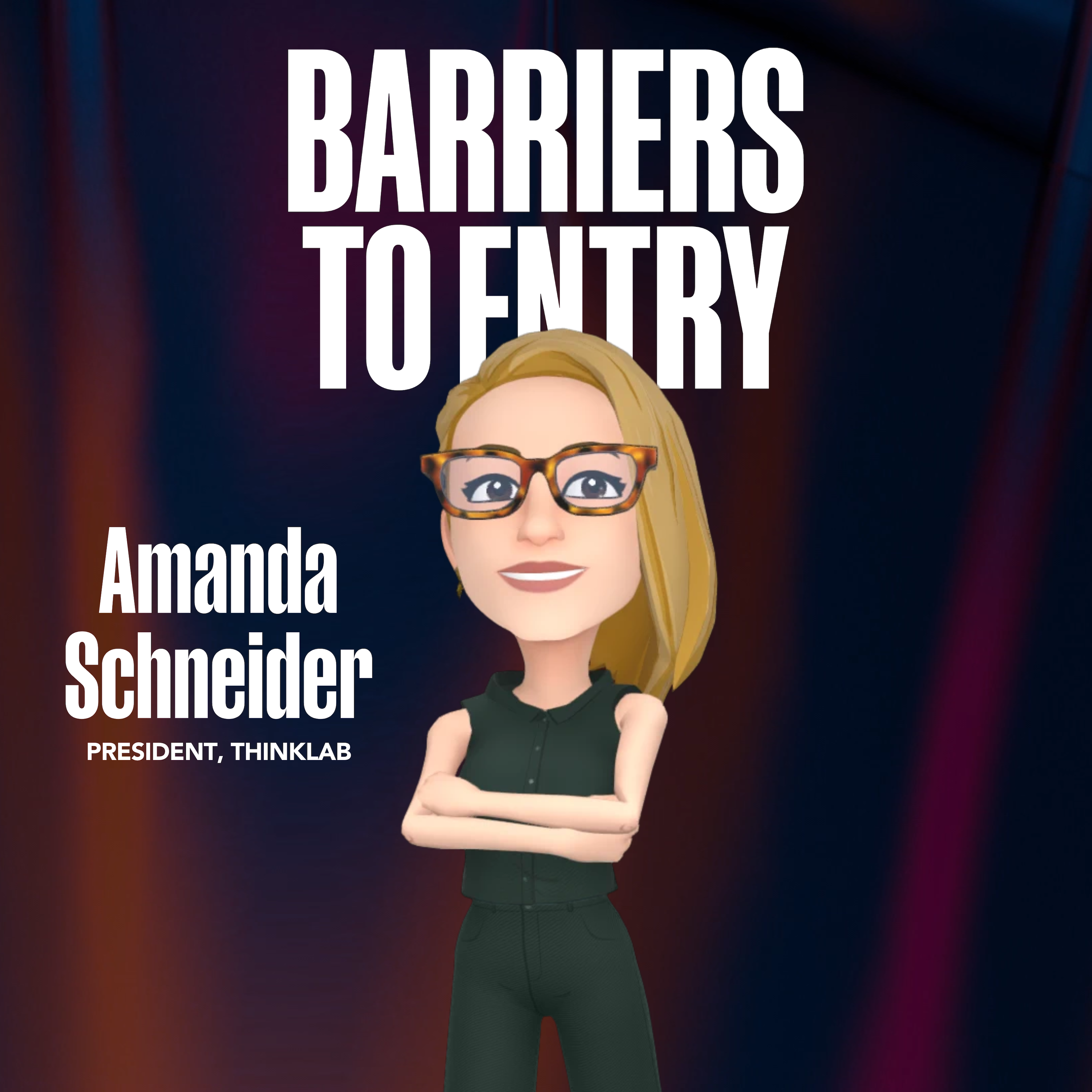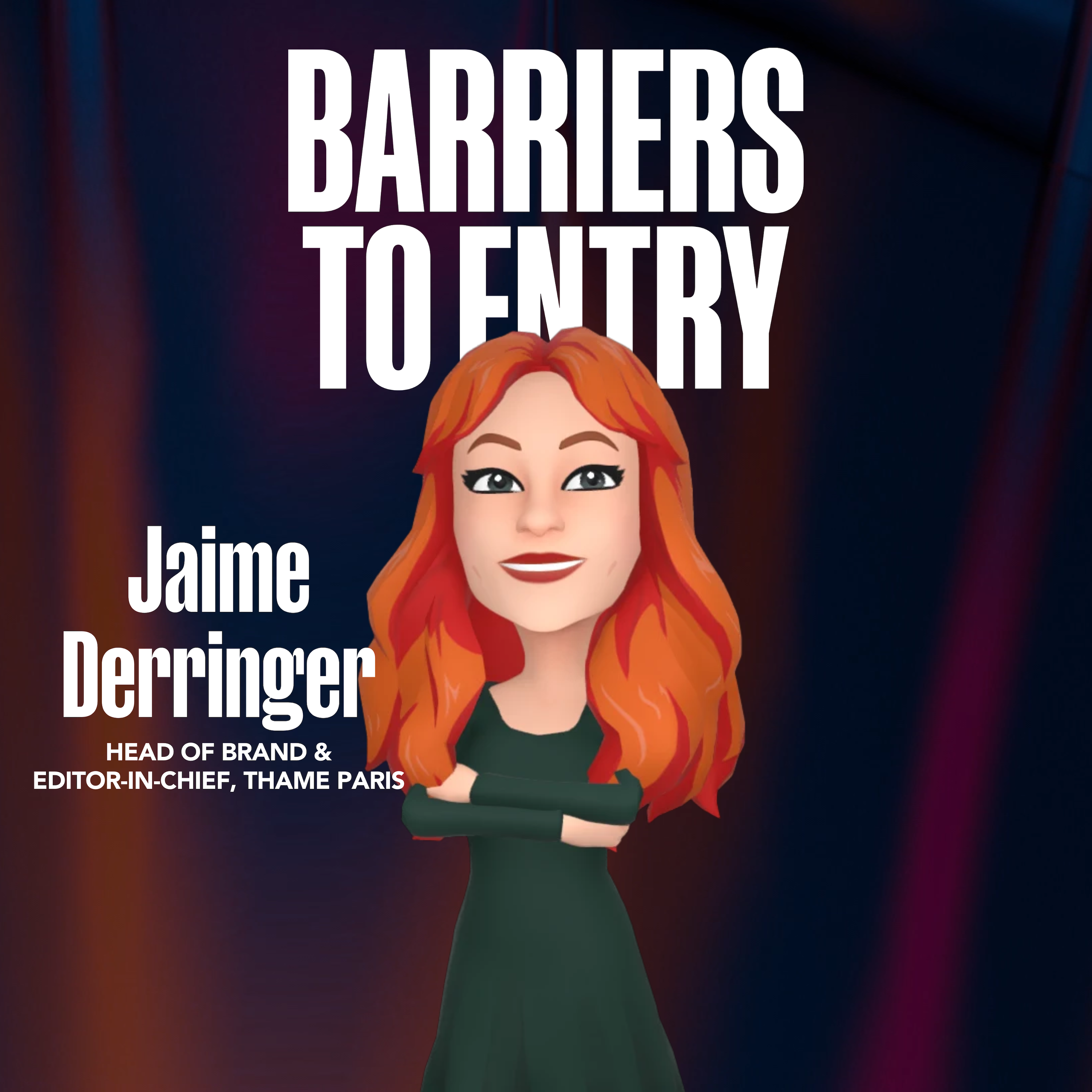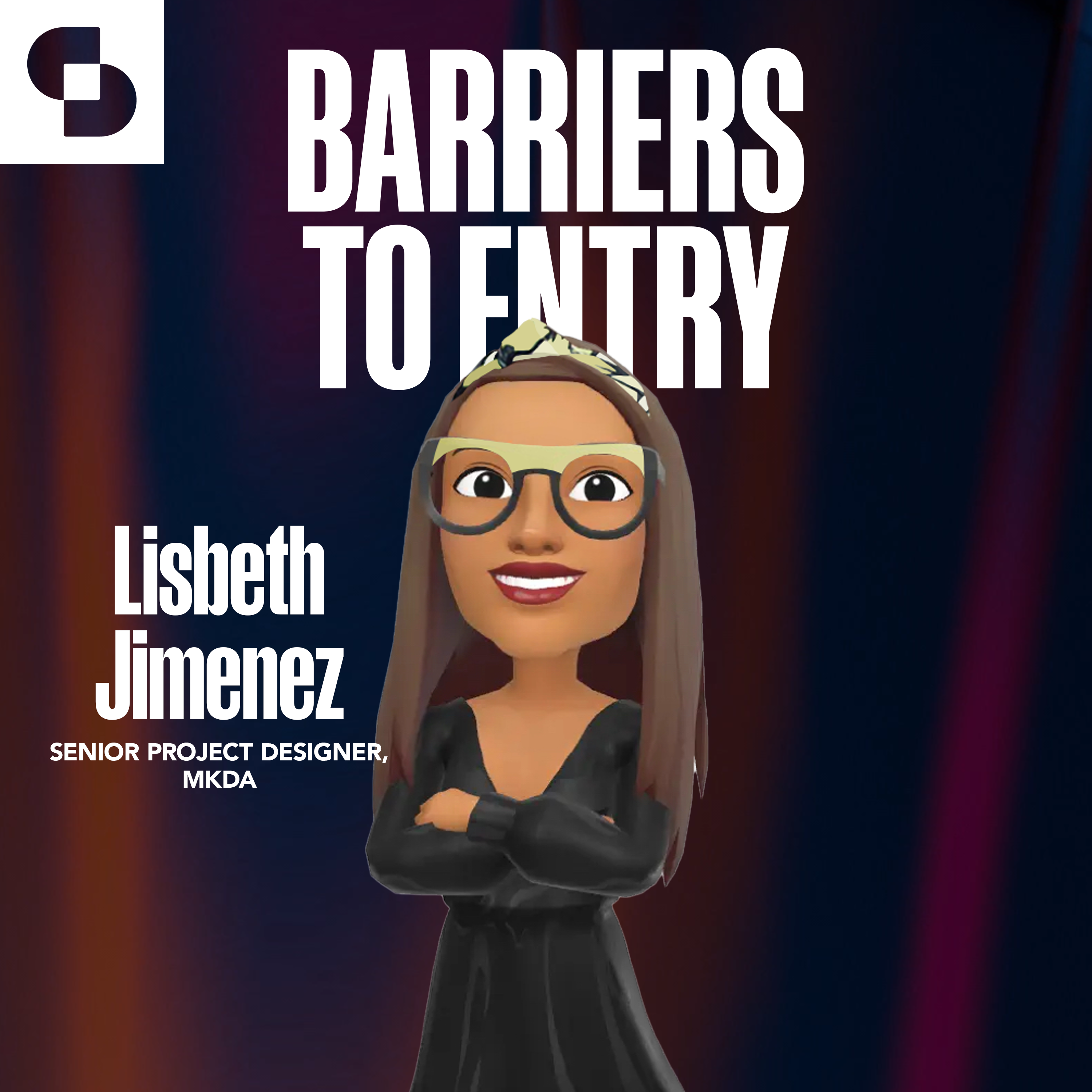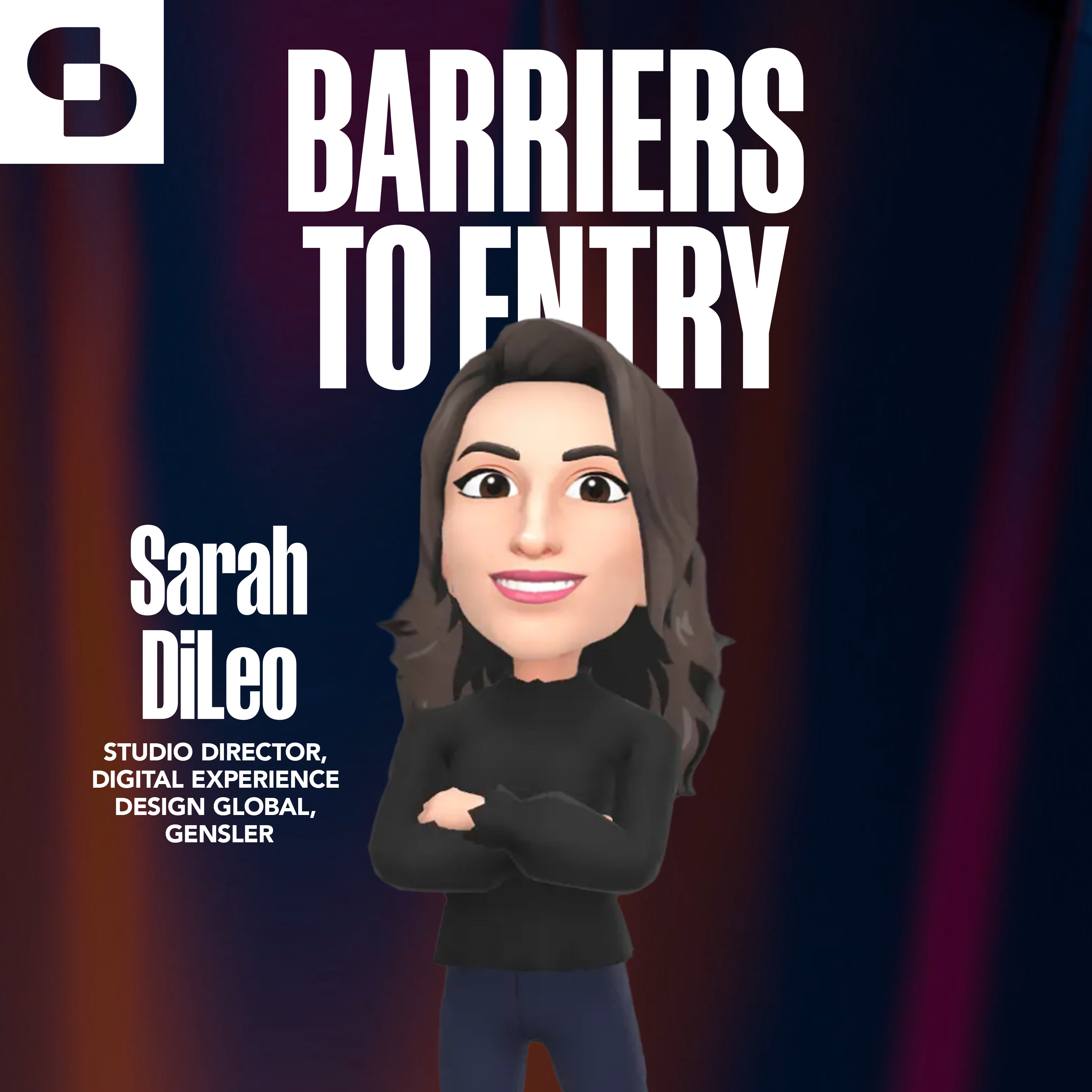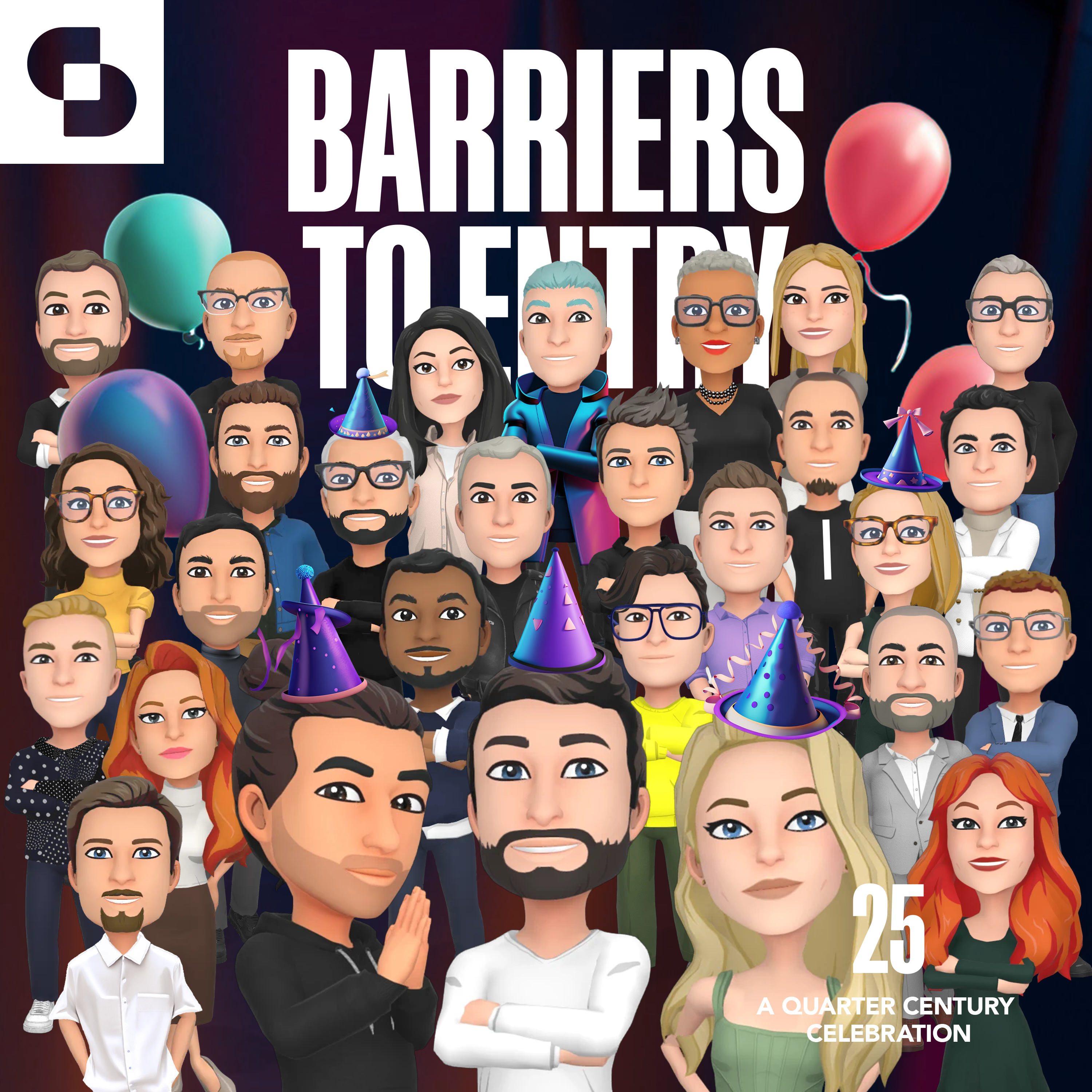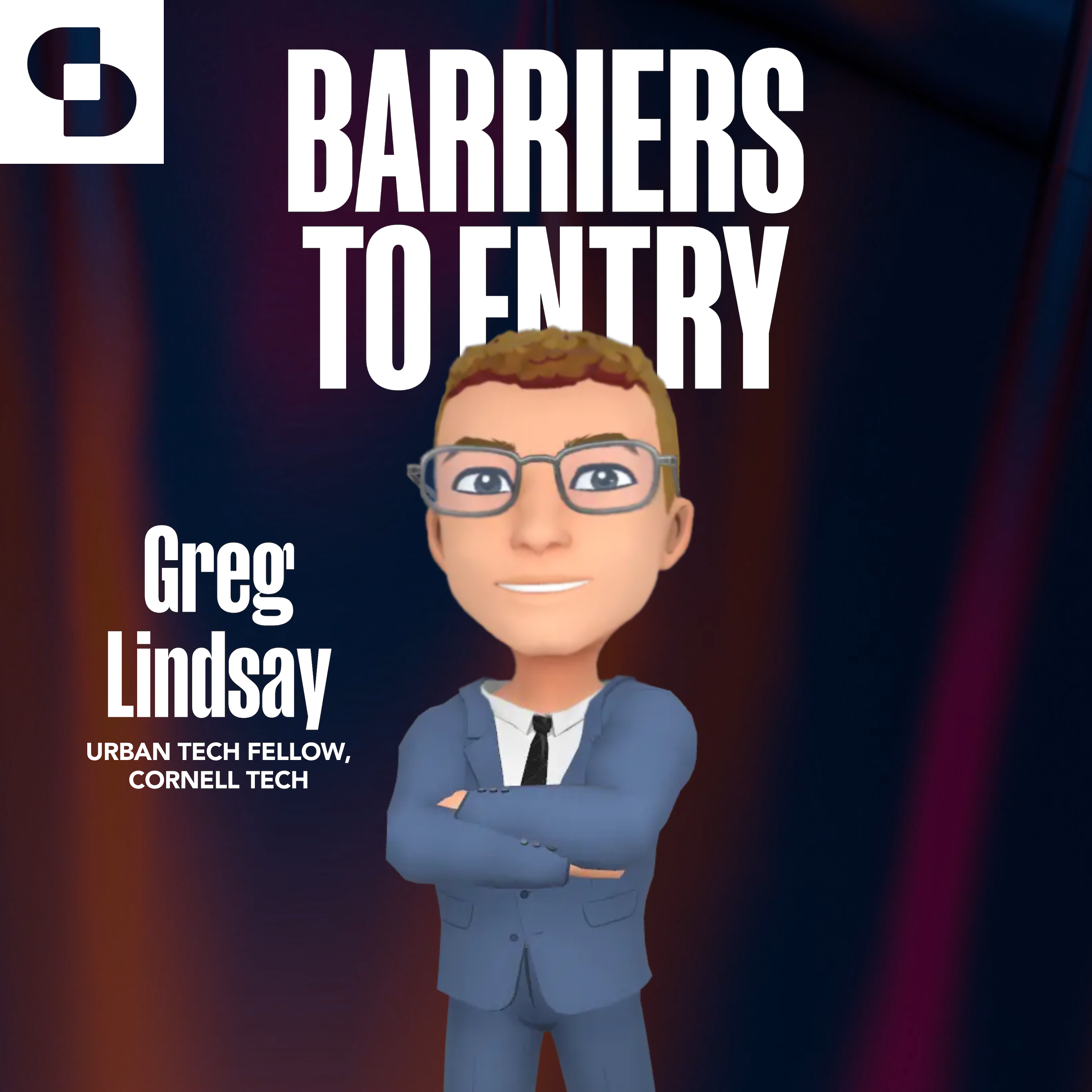In this special Bonus Pod episode, we welcome the Founder of Architecture Hunter, Amanda Ferber. While Bobby gets the day off, Andrew and Tess get into it with Amanda about the rise of her Global brand from a collection of images in folders on her university computer, then Tess and Amanda discuss their impressions of being judges for the inaugural Interior Design Metaverse Architecture & Design (MAD) Awards and the implications of the metaverse on the future of design.
Connect with Amanda Ferber on LinkedIn!
Moments to check out:
- Working with brands while retaining creative independence (starts at 7:02)
- Amanda and Tess discuss their impressions of judging MAD Awards submissions and the varied approaches to design (starts at 10:12)
- Exploring virtual reality with architects around the globe (starts at 18:52)
Connect with our hosts on LinkedIn;
References and resources:
- Experience the MAD Awards in the Metaverse (available on desktop, mobile, tablet and with goggles)
- Architecture Hunter
- YouTube
- Newsletter
- The Hunt
Discover more shows from SURROUND at surroundpodcasts.com. This episode of Barriers to Entry was produced and edited by SANDOW Design Group. Special thanks to the podcast production team: Hannah Viti, Wize Grazette, Kasey Campbell, Rob Schulte, and Samantha Sager.
Amanda Ferber: [00:00:00] To design for the real world. We started getting like inside the box cuz we always have like a client to correspond and also so many things that put us inside a box. So I’m very, very fascinated on like how infinite is Humans creativity.
Andrew Lane: Welcome back everyone, to Barriers to Entry, the podcast where every episode we get into with the leaders, the designers, the early adopters, and the influencers who are helping to shape what Web3, the metaverse, and the blockchain will mean for the architecture and design industry. I’m here for our first bonus episode with my magnanimous co-host, Tessa Bain and Bobby Bonett.Welcome guys.
Bobby Bonett: Normally we’re not hanging out every week, but this week we’re bringing a special episode. And why is that, Tess?
Tessa Bain: That is because we have a really special guest this week. Amanda Ferber. She was one of our very esteemed MAD awards jurors. And is most known for [00:01:00] founding Architecture Hunter, which you can check out on Instagram.She has over 3 million followers and develops the most exciting content in the architecture industry on Instagram.
Bobby Bonett: Did you know I have over 300 followers on Instagram Tess?
Tessa Bain: Yeah, it’s actually, if you just take that and add a couple zeros, maybe like 10 and I aren’t two different.
Andrew Lane: Yeah, you might need to post a little bit more.
And for those who were not playing along at home, the MAD Awards of course refers to the Interior Design, metaverse Architecture and Design Awards, the inaugural awards where the GALA event will be held in the Metaverse special invite only, I believe, Bobby this week. But we will be making that experience available to everyone, and the show notes will be a great way to find the information about how to experience our gala location in the Metaverse as well as.
All the great projects that you’ll hear Tess and Amanda is speaking about in the pod.
Bobby Bonett: Pop into the show notes. Sign up for an invite. It’ll be at MAD Awards metaverse. You’ll be able to watch the presentation, the announcement of the winners, and then experience a hall featuring all of the [00:02:00] winners of our first MAD Awards as well.
I wasn’t able to join Andrew and Tess Mis you or or this interview, so I’m as excited as the listeners to get into it.
Andrew Lane: So should we have a listen? Let’s do it.
We could not be more excited to welcome today’s very special guest. You might know her from her boundary pushing architecture focused Instagram, or for ‘The Hunt’ her international virtual reality exhibition featuring architects from nine countries. I’m excited to welcome all the way from Sao Paulo Brazil, the founder of Architecture Hunter, Amanda Ferber.
Welcome to the pod, Amanda. Welcome.
Amanda Ferber: Thank you, Tessa. Thank you, Andrew. I’m very excited to be here in your podcast. It’s like a honor for me, so thank you so much.
Andrew Lane: Really excited to have you. So we met just about a year ago, I guess, at Salone. Yeah. When you’d come to a panel that Tess and I had been on, and that’s when we started to really get to know your story.
But for the listeners of the podcast, just tell us about Architecture Hunter and where that got started and how it came to be, what it is today.
Amanda Ferber: [00:03:00] Okay. So I, that’s a very nice story because. To be honest, like this year our Architecture Hunter completes 10 years. Congratulations. And I really, really, really like didn’t imagine how like that one day I’ll be here, uh, when I created it, you know, it was like mm-hmm.
Really genuine. It was a hobby for me in the beginning. So yeah, it was in 2013. It was my first year in college, architecture school, and I was. So excited about architecture because like since a child, I used to say, okay, I wanna be an architect. So I always liked it. In architecture school, of course, like we always have to study lots of references, so our professors always want us to bring study cases.
So I started say like making it a folder in my phone. With architecture pictures and I thought like, okay, the world needs to see this because I realized like this so nicely created architectural projects and I really wanted more people to see it, you know, and Instagram [00:04:00] like, As a platform was created in 2010, but they’re not popular in 2012.
But at that time, people used to have only like their personal profiles, you know, their personal accounts. Uh, so that was not very common at that time. So Architecture Hunter being created in 2013, like it means that it was one of the first architecture profiles on Instagram. So I think this helps too.
And also like posting everything in English because like Brazilian’s speak Portuguese and sometimes this is a question that comes from people for my country. Like, oh, well, like why were you posting in English? And, well, it’s just because the projects were from all over the world. I just wanted everyone to understand what I was talking about.
Andrew Lane: Flashing forward to today. I mean, we’ve been talking about this as an Instagram handle, but this is a full architectural content operation at this point. Uh, your team is 15 or 16 people. Mm-hmm. Can you talk a little bit about the, what this hobby has now become 10 years later?
Amanda Ferber: Yeah, so this is something also that I [00:05:00] could not imagine that was going to happen. So in 2018 when I graduated, I understood that, okay, I need to do something else with this. Like this is my calling. You know? So I always believed a lot in the power of videos, like in the audio/visual spread message, especially when it comes to architecture, because I think it’s completely different to hear an architect or a designer talking about their work.
And because they talk out loud with so much passion, you know, and also to showcase a project different when you’re working with videos. So I hired, uh, some production from Brazil, from some friends of mine, and we started doing some videos here in Sao Paulo interview some of my favorite architects. And the result was great.
So we spent like the whole year, 2019 filming, but then pandemic hit, COVID hit. Mm-hmm. We didn’t know what to do exactly because we didn’t know like how long we would have to stay at our homes. Like we had to stop. But at some [00:06:00] point that made me think that, okay, for us to produce as much content that we want, I had to have my own team.
So I invited my friend that is was the owner of the film production. To be a partner at Architecture Center because he had this like background in artificial, and then he also introduced me to another person, Luis, that used to have a production company. He had already made films for Netflix or for the movies, you know, so he had much more experience than us.
So in August, 2020, both of them came to protection and joined as partners. And then we started building our own team. So now we are actually 17, but we also have some correspondence around the world. We have a team located in Milan and in Portugal. Sometimes we go from Brazil to other places, to the shootings to.
So, yeah, like if I met Amanda for 2013 and I told her that all those things would be happening, I [00:07:00] definitely would not believe. That’s awesome. Yeah.
Andrew Lane: How is it that you are like thinking about monetizing the business then, now that you’ve got like a staff and you’ve got, you know, operations on multiple continents?
Mm-hmm. What are some of the ways that you’re working with brands and then other sort of formats.
Amanda Ferber: Yeah, so we, we always work with friends because like, you know, we, we really want to keep our creatorship like independent, so it’s not like, oh, the architect get in touch with us, and then they hire, uh, us to make like a short film about the work.
It’s not, it’s never like this. Sometimes the architect send us a project as of suggestion for a publication. I don’t think, oh, okay. This project has like lot of potential to be more than just a location, but a short. Film about it, an interview about it. And then usually the architects, they send us a list of manufacturers or brands that were involved in that project.
And then our team from Architecture Hunter get in catch with this brands to try to understand if they’re interested in sponsoring the video or the content on Instagram. And that’s interesting because [00:08:00] 70% of our audience are professionals like that work with architecture or design. And 30% are like, what do we call enthusiasts?
Most of them are professionals. So they want to know, like we had lots of comments on our post. Like, oh, where is this sofa from? Or where? Where is this material? What, you know, so our audience wants to know this information. This is an important information for them. So like, The brand needs to reach out to architects, professionals so they can specify their products.
And our artists wants to know like the deal from the market. So it’s a very interesting business model because this way we keep our creatorship independent and we can work with brands that the architects also believe. Mm-hmm. That they trust.
Tessa Bain: Yeah. Curious if you’re seeing. More recently a rise in digital art and digital architecture.
Amanda Ferber: Yes. Well, I’m seeing some great, uh, CGI artists or like people working with digital architecture and digital images to [00:09:00] represent architecture. I like to see that people are engaging with things like this because I think this way people can try, like they can express their selves and what they believe in architecture and design in a way that more people can understand because.
Especially like those that are just enthusiats, they don’t work with architecture or design. Sometimes like the ways that we had to represent architecture or design were more, I don’t know, subjective or not only easy for everyone to understand. So I like to see what like digital is doing for our sector and or even more people get anxious.
Tessa Bain: Do you get feedback from the community on it too? Cause I know you do a lot of really great surveys on your stories and things like that. Are people. You know, choosing those projects and, and gravitating towards those designs? Or do people gravitate Yeah. Towards more classic traditional architecture?
Amanda Ferber: No, I think people love to see like those contemporary architecture and modernists or, and you know, like we usually tend to post more contemporary, like not so [00:10:00] classical architecture.
And it is interesting to see the feedback from people because like, they are always very, Curious to know more details about the project. That’s a great approach.
Andrew Lane: Selfishly, I get to chat today with two people who had the pleasure of being the first jurors for our Metaverse Architecture and Design awards.
You know, this was a unique opportunity because we’re all seeing a lot more virtual and digital work coming through the architecture space, but, Part of the vision concept of the MAD Awards was to say, let’s try to put it as much of it as we can in one place and really celebrate it and create a platform so that those people who are maybe a little bit more hesitant getting into the space can see how much great work’s being done.
Tessa Bain: I was, uh, a little overwhelmed. I’m not gonna lie. I logged in and, and I mean, overwhelmed in a good way. It was just exciting to see the volume of the shortlisted finalist, and also was pleasantly surprised to see the quality of the submissions as [00:11:00] well. I just thought that was really cool. We had major corporations, established architecture and design firms.
We had hospitality companies, so you know, really that was kind of my first impression right out the gate.
Amanda Ferber: Yeah, I love it!
Andrew Lane: too. You go into that jury portal and you see those shortlisted entries that were part of what giving us your judging package. Like what were those first impressions like?
Amanda Ferber: It was so hard. Oh, at the same time, because there were so many good projects and you had like to like kind of make a ranking, you know, of the best one. That was so hard, like, thank God that I’m not the only one who has to decide this, because I couldn’t choose only some of them, you know.
Tessa Bain: If you were struggling, then that makes me feel a lot better because I was having a very hard time. I was handing out fives like candy at one point, yelling. And Yeah, and it was also, it was interesting to be judging through the lens of both practiced utility, so metaverse [00:12:00] designs that kind of mimic and could enhance physical spaces and things that we’re doing, you know, that would be very easily replicated and or built in the physical world.
Yeah. And then kind of hold up against different categories where it’s maybe more, it’s metaphysical the right word, where it’s out of this world types of architecture or design and that was, that was an interesting, to wrap your head around that process.
Amanda Ferber: Usually the, the projects that were not like, you know, possible to build were mm-hmm. More intriguing. I really liked [inaudible], but again, like it was so hard to like, Rate all the all of them because they were so interesting.
Tessa Bain: I think also too, just being that it’s the first year I was really impressed with the submissions of like the inaugural year. I think what will be very fascinating is to witness the evolution of the design in this space.
Because it’s almost like we’re early days, kind of like everyone is building spaces that do have some sort of reference to real life. Like one of the things I [00:13:00] noticed is that many of the structures that were. Metaverse based meaning that would not be able to be built in real life, actually still possessed very irl kind of structures, like columns.
Mm-hmm. Like why, you know, walking through a space, do you require structural columns in a metaverse build? So yeah, it felt like we’re still referencing in most cases on, on that side of things, practical building elements. And I’d be really curious to see as the years sort of unfold with MAD, how that evolves.
Amanda Ferber: Yeah. You know, this point that you mentioned was something that like, it really made things even harder because there were some projects that were incredible, but it had like this columns then, like there were some other projects that were very interesting, but they were more like out of the box, you know?
So I thought like, oh, okay, like this person understood more than like they’re building metaverse and then some things are not needed. So it was very hard to read because. I [00:14:00] had to rate on like their creativity and also on a aesthetics. There was like on a specific project that I think it was like a gallery and like the art pieces were floating.
Mm-hmm. I dunno. But this one. Yeah. Yeah. And I really liked that. I hope this’s more like this next year.
Tessa Bain: Same. Yeah. That one was incredible. And that’s exactly, Thinking outside the box is, you know, you don’t need gravity and so you have the opportunity to sort of exhibit pieces of art or artwork in a way that you can view from 360 degrees, including under and over.
And I thought that was really cool.
Andrew Lane: Did you find yourselves having to consciously think differently on that point? Like, Tess, you brought up the columns. Example, Amanda, you brought up the floating artwork, like they’re kind of the exact. There, they’re sort of the opposite examples, but were you finding, um, that you needed to kind of put a different frame of thinking on as you went into some of the projects?
Or was it something that would just sort of flowed naturally out of like creativity and inspiration or maybe a hybrid of the two? [00:15:00] A little
Tessa Bain: bit. You know, like there’s a little bit of it where, it’s not an apples to apples. It’s very hard to compare a digital twin, let’s say, up against something that would be completely out of the box.
It almost feels more like you’re experiencing art in that way that you have to, like, it’s a little abstract. You have to like remove, you know, the confines of your mind to experience it versus when you are experiencing a place which is, you know, has fundamental physics, I guess is, is the way to say. And that’s not to say that those places don’t also possess an element of art, but you do have to sort of understand why something might have been created in the way that it was.
Amanda Ferber: Yeah, I agree. I, I think, I think it’s just like when the projects, were not following the physics worlds, you kind of end another layer, you know, in their experience, right? So like you’re not only paying attention to the piece of art, But also in the experience of seeing a piece of art, you know? So I think [00:16:00] that’s the difference and that’s what actually makes it, makes it so cool to have an art gallery in Metaverse, you know?
Tessa Bain: Mm-hmm. Yeah. The galleries are, are an awesome application.
Andrew Lane: So I think the other thing that’s gonna be really exciting about the way the awards come to a conclusion is that we’re actually going to be able to invite the industry to come into the space and really explore. Not only the finalists and the winners, but just kind of your own thoughts as jurors.
And we even have a little bit of a surprise coming for what that space is gonna look like. But I mean, Tess, you’ve kind of been on the inside a little bit and, and Amanda, you, you’re running a little bit blind and I think that that’s kind of interesting. Like what is it that you’re hoping that people who experience the outcome of these awards will think and, and feel and maybe do?
Tessa Bain: I really hope that people take the opportunity to try to come into this space. So we have, of course, audience of all different experiences, so people that have spent a lot of time in metaverse, people that have not spent any time in the metaverse, being that it’s a very accessible place, like headsets [00:17:00] are not required.
So goggles are not needed to experience. I really hope that that accessibility opens the doors for people to take their first steps and you can’t see ’em doing air quotations into the metaverse, into our galleries, and. And it’s a really immersive way to get to experience a lot of these finalists and a lot of the submissions.
I mean, we’re taking advantage of the fact that it’s in the metaverse. It’s not common for the greater audience, for the most part, to be able to experience an award show in this fashion. So I’m excited about that. Amanda, what are you thinking?
Amanda Ferber: I hope that the results of this word makes people be more creative because sometimes when we have to design for the real world, we.
Start getting like inside the box, you know, because we always have like a client to correspond and also budget, and rules off like physics rules and all, like so many things that put us inside a box. So I’m very, very fascinated on like how infinite is. Humans, [00:18:00] creativity and especially architects and designers, creativity, very fascinated on it.
And especially because I’ve been working with like curating architectural projects for 10 years. That’s what fascinates me because in the beginning I used to think like, someday this is have to end like, or people will still be building like amazing things, you know? And now I see like that. Things get even better, like even more interesting.
So it’s like my processing, being a creative architecture for 10 years made me be very fascinated about it. And then like with Metaverse is something else, you know, because now people can be even more creative. Mm-hmm. And I think that there’s a word will help people to get outside of the box. Not even for those who are doing projects for the award, but for people will.
Just go there and see the results of this project because this will inspire people, you know?
Andrew Lane: So you’ve been doing some inspiring of your own as well. I mean, you told us that F 2019 was your first experience with virtual reality goggles, and [00:19:00] that set you on a path to create a really unique exhibition.
Maybe you can tell us a little bit about that program and what it was and how you’re evolving it.
Amanda Ferber: It was so interesting. So I have friends that they had an picture studio and then they like. Open up site business to actually start working with 3D, like 360 degrees models, you know, goggles. And then I went to their studio and it was my first experience with Oculus and I was so amazed on the potential that this has for architecture because it was so interesting.
Like they were showing me some projects. That it has. You just had to point and you can select, like if you want like a marble flooring or like a wood flooring. I don’t know. And it was so interesting. I thought, okay, this is something that definitely is going to change the world for us, our, like our industry, you know?
And I got very fascinated because there is something that in school, like professors always say that we have, like for us to be good architects, we have to [00:20:00] travel and visit as much like architectural pieces that we, we can, you know, architectural projects. And I know that this is not like the reality for everyone.
So I thought, okay, like. There are so many incredible architects and there’s so much like infinite creativity in their minds. It would be amazing to select like our favorite architects from different parts of the world and create like, uh, an exposition that people can actually visit projects from this incredible architects from different parts of the world, you know?
So yeah. And then in 2020, so I had the idea in 2019, I looked for a studio that. I used to work with Oculus, and then we selected nine architects from nine different countries. We invited them to participate in this exposition of ours that is called The Hunt. And we gave them like the same briefing for a project, like this specific briefing for a project.
And then they sent us this project and then we turned this into virtual reality. But then of [00:21:00] course, because in 2020 also Covid, we couldn’t make an exposition with people sharing oculars, you know? So. That was possible. So we have to code, but during the time, we also improve the experience. And now at the end of this year, we are bringing the first physical exposition.
The first edition will happen in Sao Paulo, so probably it’ll be in a gallery or something that people will go there with the Oculus and have the experience of going in this project. So we invited Kengo Kuma from Japan, [inaudible] from Brazil, Prince Sebastian from Spain, Michelle Hodgkins from Mexico, Yodezeen from Ukraine. We’ll have from Singapore, [inaudible] from Argentina, 3XN from Denmark, and I’m missing one.
Andrew Lane: We’ll include a link to it in the show notes. No worries.
Amanda Ferber: But yeah, so like they designed these projects for us and now we are, at this moment we are making some like tests with. [00:22:00] Group of people to understand like how long people take to go to all the spaces to have experience, what we can improve. So hopefully the end of the year we’ll have to first experience the first exhibition.
And who knows, like the idea is to visit, to go to different cities in the world to bring this acquisition. So who knows? Maybe we’ll be in Milan next year. I dunno. I dunno. Let’s see.
Andrew Lane: That’s exciting. Well, it’s another amazing initiative. We’ll definitely wish you all the best with it. Is there anything else people should watch out for from you or from Architecture Hunter in these coming weeks and months?
Amanda Ferber: Well, last year in December, we kind of like relaunched our platform that follows this like concept that we created for watch and read. So the idea is to always bring content about architecture and design in videos, like especially in videos. But we also have like articles about the video, you know, and we always try to bring another approach because like our [00:23:00] videos are always talking about architecture and design.
So in our text, usually we try to bring something else. Like that is not related to architecture. Actually, but it’s something that is interesting for people to know more about that project, you know? So it’s pretty interesting because we have some like interactive, only by now only two videos that are interactive videos that you can actually like choose the path of the video, like the next project that you want to see, you know?
So it’s pretty interesting. So for those who have not entered architecture hunter’s website yet, just architecturehunter.com and also our newsletter is something a new for us too. So yes, we would be, I think people would love to subscribe to our newsletter. Uh, that, and you can do this in our website and yes. I mean there are lots of things to come this year, but it like they’re yet to come.
Tessa Bain: Well, that’s the perfect segue. We like to always end the pod by asking the question about what advice would you give or resources would you share with a listener out there who’s looking to get into this space or even just understand it a [00:24:00] little bit better?
Amanda Ferber: I think my advice would try to be always like, Thinking outside the box, you know, I think this is what the world needs, you know, for architects and designers and everyone should always try to think outside of box and not to do the same thing that like everyone is doing.
And that sometimes it might feel that it is not gonna happen. But I think like if you. Insist like, if you do believe in this new idea and this things just, just go for it. Even if it looks that sometimes it’s not going to happen, eventually it is, you know, if you put all your energy in it, and I think when you do things generally, it really like things really happen.
Tessa Bain: I love that. I think that’s great.
Andrew Lane: Yeah. That’s amazing. Well, thanks so much for joining us today, Amanda. We really appreciated the conversation and the chance to hear, uh, your own story. I’m sure that in 10 years from now, the 10 years ago, Amanda will be even more impressed with where you’ve taken things with Architecture Hunter.
But we’re super happy [00:25:00] that we could have you on today. And yeah, looking forward to seeing what comes next.
Amanda Ferber: Thank you guys and congratulations also in all the initiatives, especially with the awards of course, but also the podcast. Thank you so much.
Tessa Bain: Thank you.
Andrew Lane: Such a great conversation. So sorry you couldn’t join us, Bobby, but it was amazing to hear from Amanda like to think that a university sort of folder on her computer could turn into this global media brand is just an incredible testament to the perseverance there, but also, you know, just to the creativity and to the talent that she has and I, thought that that was an amazing way for us to be able to also share, you know, what we’re thinking with the MAD awards.
And I mean, I don’t want to step on your toes here with a plug or anything, Bobby, but uh, it was so great to have Amanda on to really help bring that to life along with Tess, who were so inside in that process.
Bobby Bonett: Yeah. And so if, if you’re psyched now to experience the entries and see the winners of the [00:26:00] 2023 Interior design, Metaverse Architecture and Design Awards, make sure to head over to the show notes to get a link to sign up, be invited, experience the metaverse for yourself.
Thank you. Amanda for joining us on today’s podcast. Big thank you to our production team, Sam, Wize, Hannah, Rob Schulte, newest member of the club, our Chief research Officer, Casey Campbell, and the studio by SANDOW. That whole team, Barriers to Entry is part of the SURROUND podcast network. Make sure you go to surround podcasts. Dot com. Surround podcasts.com to follow. Find out where to get Barriers to Entry and experience all of the fantastic programming at the surround podcast network. Smash the follow button,
Andrew Lane: or gently tap it,
Bobby Bonett: you know, with whatever force you’d like. Just make sure to follow. Give us five stars in your favorite podcast platform, and join us next time as we continue to break down the barriers to entry.
Tessa Bain: See Andrew, that’s how it’s done. That was an epic plug. Mm.[00:27:00]

